Hoplo catfish (Megalechis thoracata) is a popular freshwater aquarium fish belonging to the Callichthyidae family, commonly known as armored catfishes. This species is renowned for its undemanding nature and peaceful temperament, which is a rare quality among catfish. With its striking appearance, the black hoplo catfish has become a favorite among aquarists.
In this article, we will explore how to properly care for hoplo catfish, including feeding practices, selecting compatible tank mates, and breeding techniques. Whether you are a beginner looking to add an interesting species to your aquarium or an experienced aquarist seeking more information, you’ll find valuable insights here.
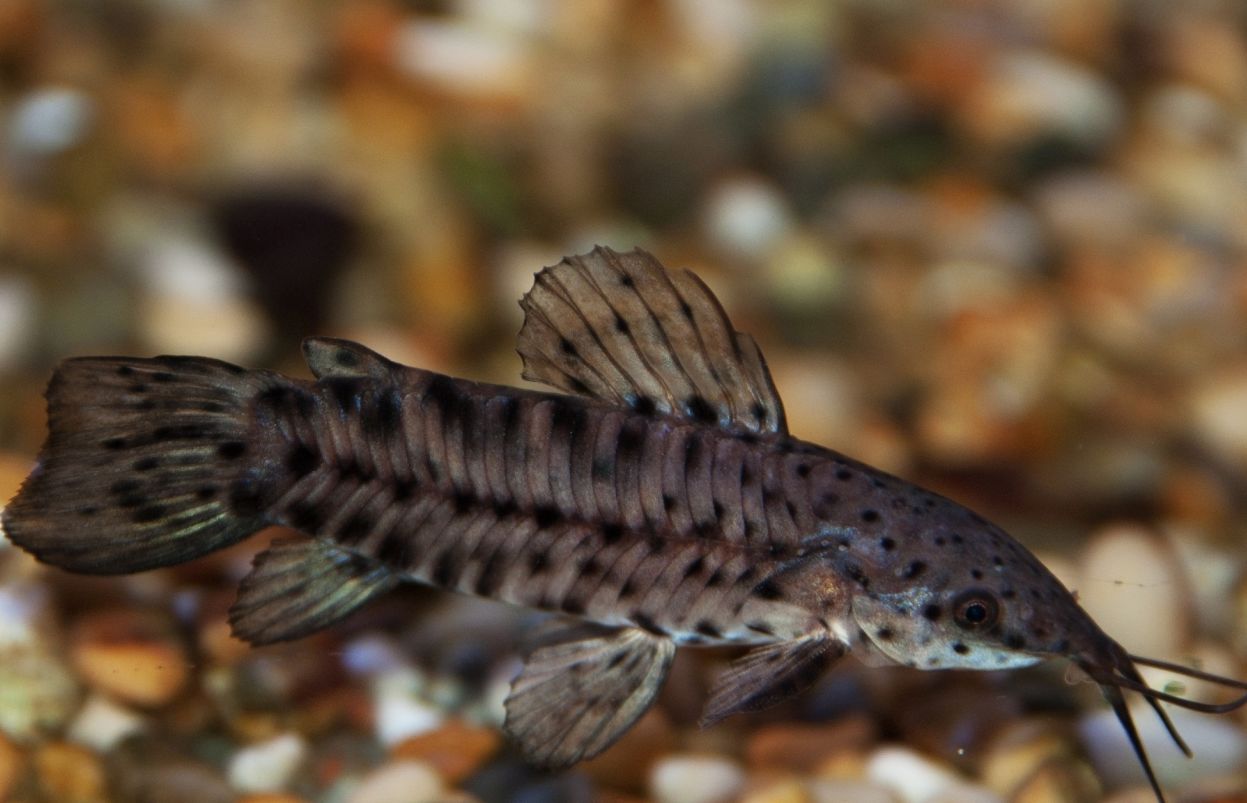
Contents
Habitat in the wild
The black marble hoplo catfish (Megalechis thoracata) inhabits the central and northern regions of South America, specifically within the Amazon and Orinoco River basins, the upstream areas of the Paraguay River basin, and the littoral rivers of northern Brazil and the Guianas. This species has also been introduced into Florida waters over the past few decades, thanks to the efforts of aquarists. Remarkably, it has established itself there, competing successfully with some local fish species.
These fish are adaptable and thrive in various environments, including both running water habitats and small, silted, densely planted lakes formed after river overflows. They can even be found in brackish waters that experience oceanic tides. Due to their unique anatomical features and adaptability, hoplo catfish can survive in conditions where many other fish would perish.
Interestingly, some sources suggest that hoplo catfish have a symbiotic relationship with piranhas in the wild. It is claimed that piranhas do not view them as prey and even allow them to feed on parasites from their skin. However, this claim lacks conclusive evidence.
The name “hoplo catfish” originates from the fact that it was once classified under the genus Hoplosternum. Until the end of 1997, the species was known as Hoplosternum thoracatum. Following a revision by Roberto Reis, the Hoplosternum genus was divided into three separate genera, leading to the reclassification of the black marble hoplo as Megalechis thoracata. The name “Megalechis,” derived from Greek, translates to “large plate,” which reflects the distinctive feature of this species: its body is covered in rigid protective plates.
| Characteristic | Description |
|---|---|
| Scientific Name | Megalechis thoracata |
| Common Names | Hoplo Catfish, Hoplosternum, Spotted hoplo catfish |
| Origin | South America, mainly in the Amazon River Basin |
| Size | Up to 4-6 inches (10-15 cm) |
| Lifespan | 5-8 years (approximately) |
| Temperament | Peaceful and non-aggressive |
| Tank Size | 20 gallons or more (depending on the number) |
| Water Parameters | pH: 6.5-7.5, Temperature: 72-79°F (22-26°C) |
| Water Hardness | Soft to moderately hard |
| Diet | Omnivorous – accepts both live and prepared food |
| Feeding Frequency | 1-2 times a day |
| Tank Setup | Provide hiding spots with driftwood and caves |
| Behavior | Mostly bottom-dwelling and nocturnal |
| Compatible Tankmates | Peaceful community fish |
| Breeding Difficulty | Moderate |
| Special Considerations | May have sharp pectoral spines for defense |
Description
The wild spotted hoplo catfish (Megalechis thoracata) can grow up to 16 cm in length, though individuals in an aquarium may occasionally reach 20 cm. This species features an elongated, laterally compressed body with a wide head. It has two pairs of barbs on its upper jaw and one on its lower jaw, contributing to its distinctive appearance. The back of the fish is slightly raised, while its abdomen is flat, and two rows of rigid bony plates run along its sides. Additionally, a fatty fin is present on its back, which aids in stabilization.
The base color of the hoplo catfish is brown, with younger individuals exhibiting lighter shades and adults showing a darker brown hue. The body is adorned with small, irregularly shaped dark spots, and the abdomen is nearly white. An albino variant of the spotted hoplo catfish exists, characterized by its milky-white body and dark spots.
In addition to utilizing gills for respiration, hoplo catfish are equipped for intestinal respiration. Similar to climbing perch, pearl gouramis, kissing gouramis, and paradise fish, they often surface to gulp atmospheric air, allowing them to thrive in low-oxygen environments.
As with many widespread species, various forms of the spotted hoplo catfish exist, differing slightly in coloration and body shape. Consequently, the hydrochemical parameters of the waters in which these fish live in the wild can vary significantly, reflecting their adaptability to diverse habitats.
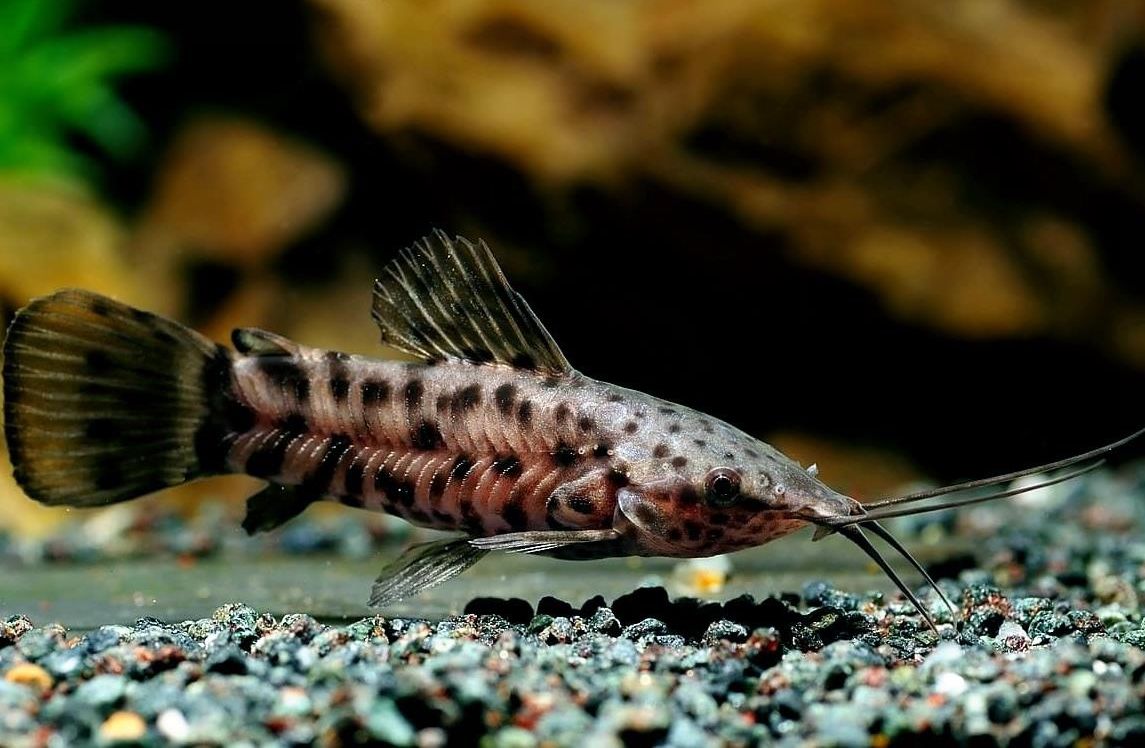
Difficulties in keeping
The hoplo catfish is a remarkably undemanding species, making it an excellent choice for aquarium enthusiasts of all levels. With their appealing appearance, ease of care, and calm demeanor, these fish are well-suited for both novice aquarists and seasoned hobbyists alike.
Hoplo catfish exhibit a crepuscular lifestyle, meaning they become most active during twilight hours, particularly at dusk. Unlike many other catfish species that primarily inhabit the bottom layers of the water, hoplo catfish often explore the middle and upper levels of the tank. They even forage for food at the water’s surface, showcasing their adaptability and curiosity.
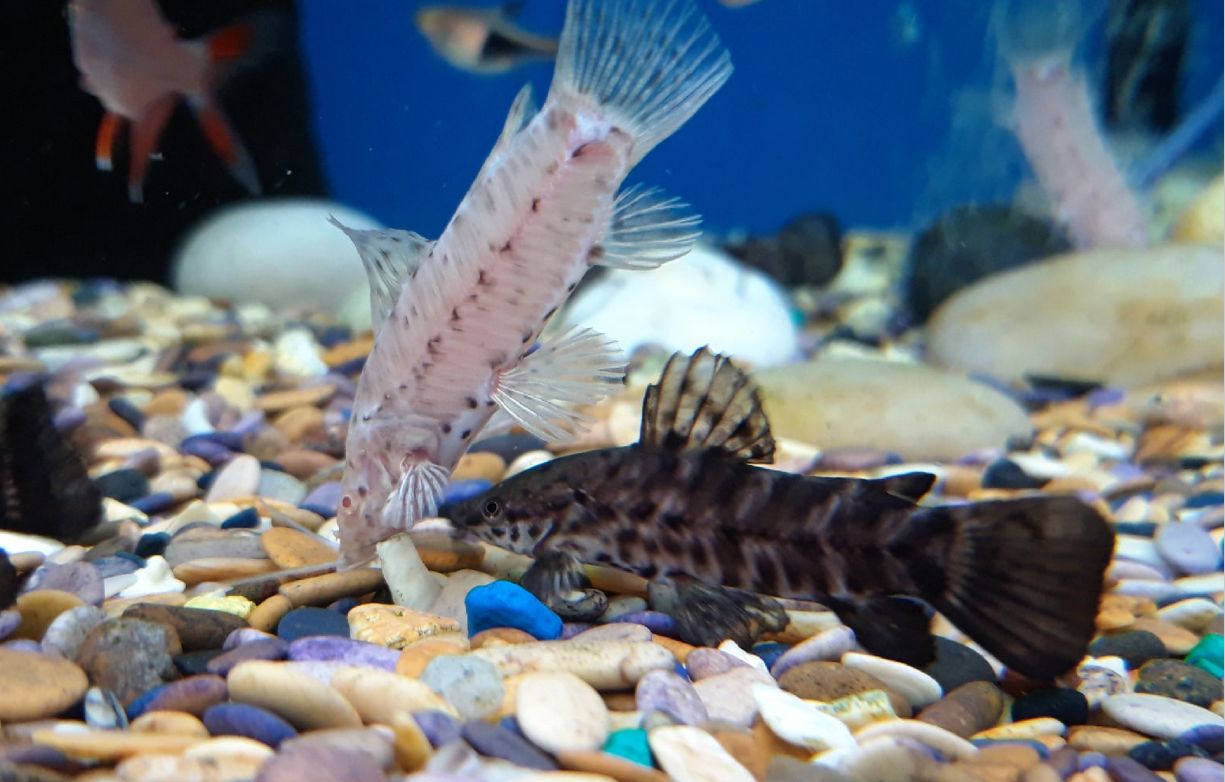
Care and keeping in a tank
Lifespan
Hoplo catfish lifespan, to a large extent, depends on their tank conditions. Thus, in the wild, the fish lives from 4 to 6 years. In a tank, its lifespan is longer, and sometimes it is 10 years and more.
Tank size
For a pair of spotted hoplo catfish (Megalechis thoracata), it is recommended to provide a tank with a spacious bottom area, ideally with a capacity of at least 40 gallons (150 liters) or more. A larger tank not only allows for better water quality but also creates more stable environmental conditions, which are crucial for the well-being of your fish.
Water parameters
Given the widespread distribution of Megalechis thoracata, it’s clear that they are not particularly demanding when it comes to water quality. Tap water that has been allowed to settle for a short time is usually sufficient for their needs. The ideal temperature for hoplo catfish should range from 22 to 30 °C (72 to 86 °F). While they can tolerate a variety of hardness and acidity levels, it’s important to keep these parameters within reasonable limits: general hardness (GH) can be up to 20°, and the pH level should be maintained between 5.8 and 7.5.
Tank setup: decorations and plants
To create a suitable environment for hoplo catfish, it’s essential to cover the tank from the top. These fish sometimes leap out of the water when they surface to gulp air, so a secure lid is necessary to prevent escapes.
For the substrate, large-grained sand or small, smooth pebbles work well. As bottom dwellers, hoplo catfish constantly dig through the substrate in search of food. Their natural behavior includes foraging and sifting through the substrate, which helps mimic their habitat in the wild. Providing plenty of shelters—such as stones, driftwood, and caves—is crucial for their well-being, as it gives them hiding spots and reduces stress. These shelters not only serve as protective areas but also contribute to the overall aesthetics of the aquarium, making it visually appealing.
When selecting plants for the tank, choose those with strong root systems, such as anubias and cryptocoryne. Hoplo catfish typically ignore aquarium plants, but their digging behavior can uproot plants with weak roots, causing them to float. To create a more natural environment, consider adding floating plants like amazon frogbit or water lettuce. These floating plants can provide dim lighting and additional cover for the fish while also enhancing the biological filtration of the tank.
Detailed Interesting Facts
- Jumping Behavior: The tendency of hoplo catfish to jump can be linked to their instinctual behavior to escape potential threats in the wild. In their natural habitat, they are often preyed upon by larger fish and other predators, which makes a secure tank cover vital for their safety.
- Substrate Preferences: A sandy substrate mimics their natural habitat, consisting of riverbeds and lake floors. The sand allows them to exhibit natural foraging behaviors, such as sifting through the substrate to find food, while also helping to prevent injury to their sensitive barbels.
- Shelter Benefits: Providing hiding spots helps reduce stress and encourages natural behaviors, making them feel secure in their environment. In the wild, hoplo catfish seek refuge in rocks, submerged logs, and dense vegetation, so recreating these conditions in an aquarium is beneficial for their psychological health.
- Plant Interaction: While hoplo catfish may not consume plants, they can still interact with them by using them as cover or foraging around their bases. Strong-rooted plants like anubias and cryptocoryne can withstand their digging, providing a stable environment and enhancing the aquarium’s aesthetics.
- Floating Plants: Floating plants not only help dim the light but can also improve water quality by absorbing excess nutrients and providing habitat for beneficial microorganisms. Amazon frogbit and water lettuce shade the tank, mimicking the dimly lit waters of their native habitats while also reducing algae growth by limiting light penetration.
- Behavioral Observations: Observing hoplo catfish in a well-planted, spacious aquarium can reveal interesting behaviors, such as social interactions among group members and their exploration of different tank levels. These behaviors enhance the overall dynamics of the aquarium and provide a captivating display for viewers.
Filtration
To create an optimal environment for hoplo catfish, it’s essential to equip the tank with a high-capacity canister filter, as these fish thrive in clean, well-oxygenated water. Maintaining good water quality is crucial for their health and overall well-being. A high-capacity canister filter provides efficient mechanical and biological filtration, keeping the water clear and free of harmful toxins. This type of filtration system allows for better control over water quality, making it easier to maintain a healthy environment.
It’s also vital to ensure that hoplo catfish have constant access to the water surface, as they frequently rise to gulp air, even in well-aerated tanks. This behavior is a natural adaptation to their habitat, where oxygen levels can vary. Regular maintenance is key to keeping the tank healthy; renewing 20% of the water once a week is advisable to prevent the accumulation of toxic nitrogen compounds that can adversely affect fish health. This practice helps maintain stable water parameters and reduces pollutants in the tank.
Understanding the nitrogen cycle is crucial for aquarists, as beneficial bacteria in the filter convert ammonia from fish waste into nitrites and then nitrates, which are less harmful. Regular water changes help keep nitrate levels in check, ensuring a safe habitat for your fish. Clean, well-oxygenated water supports the active nature of hoplo catfish, encouraging them to explore and forage.
Lighting
When it comes to lighting for hoplo catfish, moderate intensity is recommended. Bright lighting can stress these fish, so providing a balanced lighting scheme helps create a more comfortable environment. The choice of moderate lighting reduces stress and mimics their natural habitat, which is characterized by dappled light filtering through foliage in rivers and lakes. Such lighting encourages more natural behaviors and interactions among the fish.
By ensuring that both the filtration system and lighting conditions are appropriate, you can create a thriving aquarium that supports the health and well-being of hoplo catfish. Understanding their specific needs enhances your enjoyment of these fascinating fish while providing a stable and engaging environment for them to thrive.
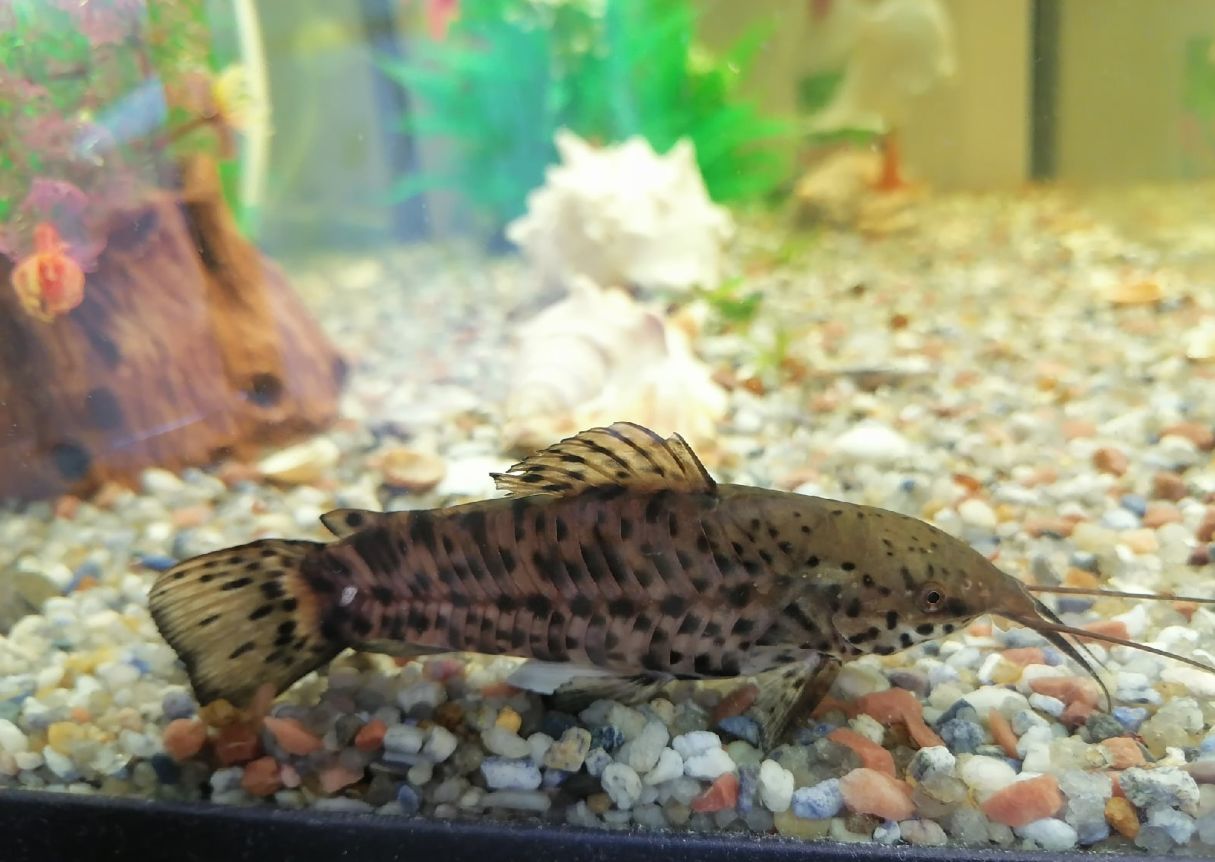
Diet
Hoplo catfish are omnivorous and have diverse feeding habits. In their natural habitat, these fish scavenge along the riverbed, consuming a wide range of food items. Wild hoplo catfish primarily feed on various bottom-dwelling crustaceans, maggots, detritus, and decomposing plant matter.
In an aquarium setting, a balanced diet for hoplo catfish should include high-quality sinking pellets and flakes specifically formulated for omnivorous fish. It is important to choose pellets that sink to the bottom, as hoplo catfish are bottom dwellers. Specialty diets designed for catfish can also be beneficial, as they cater to the specific dietary needs of these species. While hoplo catfish are adaptable eaters, they may show a preference for live foods like bloodworms or brine shrimp, which can enhance their natural foraging behavior.
Additionally, when kept in a community tank, hoplo catfish play a useful role by consuming leftover food that other tank inhabitants may not eat. This behavior not only helps keep the tank clean but also ensures that the hoplo catfish receive a varied diet, enhancing their overall health and vitality. It is important to feed them small amounts two to three times a day, as overfeeding can lead to water quality issues; portion control is essential.
Offering occasional treats like blanched vegetables (such as zucchini or spinach) can contribute to a well-rounded diet and encourage healthy foraging behavior. Their role in a community tank as scavengers can be beneficial, as it helps maintain overall water quality by reducing uneaten food, which can lead to ammonia spikes and other water quality issues. By providing a varied and balanced diet, you can ensure that your hoplo catfish remain healthy, active, and vibrant in your aquarium.
Tank mates
In a tank, spotted hoplo catfishes proved to be not picky and enduring tank dwellers. In the wild, they often stay in large schools that sometimes are more than a thousand species. For this reason, in a tank, it is recommended to keep them in a small group. At that, only one male should be in it. Otherwise, during the spawning period, they may show aggression towards each other to define the dominating species, and as a result, the weakest one may be killed.
However, hoplo catfish isn’t aggressive towards other tank dwellers. You can keep them with betta fish, black tetra, cardinal tetra, cherry barb, dwarf gourami, endler’s guppy, guppy, glofish, glowlight tetra, harlequin rasbora, kuhli loach.
Can hoplo catfish live with goldfish? Yes, but there are some advantages and disadvantages in this case. As for the advantages, goldfish leave quite many leftovers and waste that hoplo catfish will eat. The drawback is that colder water is required for keeping goldfish, and although hoplo catfish can stand abrupt water temperature changes, but yet this is a tropical fish.
It may have conflicts with its tank mates only when the keeping conditions are violated. If the tank volume is too small, adult species may start chasing other bottom-dwellers, for example, clown loach or yoyo loach – they may have territory conflicts. However, this is true only for large species since they show no aggression towards other small-sized catfishes. For example, you can often see a hoplo catfish dwelling with corydoras.
The high adaptability of black marble hoplo allows it to live with almost any fish kind, including large-sized and aggressive ones, namely, cichlids of Central America. Often this is one of few fishes that can dwell together with such cichlids as jaguar cichlid, oscar fish, texas cichlid, or flowerhorn. Hoplo catfish has its protective plates, which protect it, and it dwells on the tank bottom where it is seldom bothered by its aggressive neighbors. Nevertheless, during the spawning period, they may suffer from cichlid attacks.
However, hoplo catfish feels more comfortable with African cichlids since they can’t harm them. They only nip its long barbs.
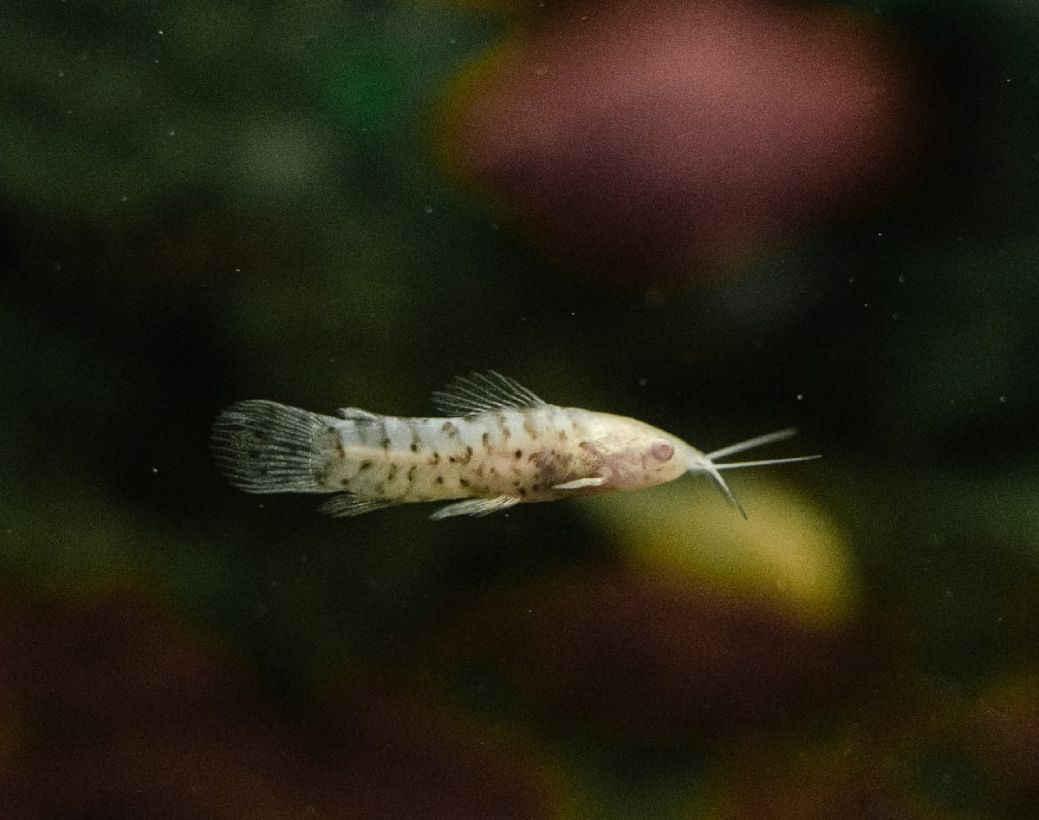
Gender differences: male vs female
Hoplo catfish typically become reproductive at the age of 8 to 10 months. One notable difference between the sexes is that males are slightly smaller than females.
During the spawning period, male hoplo catfish exhibit a distinct change in coloration; their normally milk-white abdomens take on a bluish hue. In contrast, female hoplo catfish maintain a similarly colored abdomen throughout their lifecycle.
The most reliable method for distinguishing between male and female hoplo catfish is by examining their pectoral fins. Males possess triangular-shaped, elongated pectoral fins, characterized by a thickened first ray that turns orange during the spawning period. Young males and females have oval-shaped pectoral fins, with the first ray not differentiated from the others.

Breeding
Hoplo catfish become reproductive at around 8 to 12 months, and they can sometimes breed in a community tank. However, for stable and successful breeding, a dedicated spawning tank with a minimum capacity of 50 liters is recommended. The ideal water parameters for the spawning tank include a hardness of no more than 8 dGH, a pH level between 6.5 and 7.0, and a temperature range of 25 to 27 °C.
Spawning typically occurs in pairs that form naturally within a group of fish. To encourage spawning, it is beneficial to initially lower the water temperature by 3 to 5 °C through partial water changes with cooler water, followed by gradually raising the temperature. Additionally, a decrease in atmospheric pressure can signal spawning; thus, timing the breeding process to coincide with passing cyclones may enhance success.
Preparing the breeders in advance is crucial. A diverse diet rich in animal protein should be provided, with a rotation of different food types to maintain interest and ensure optimal health. Care should be taken to avoid overfeeding, as leftover food can deteriorate water quality.
Unlike many catfish species, hoplo catfish spawn by building a bubble nest on the water’s surface. In the wild, they often use large floating leaves as a framework for their nests. In captivity, many aquarists find that a piece of foam or a plastic cap that floats well serves as an excellent nest frame.
The male constructs the nest over several days, sometimes incorporating small plant materials, creating a structure that can rise about 2.5 cm or more and occupy up to one-third of the tank’s surface. Each bubble is coated with sticky slime, which helps keep the nest intact.
Once the nest is complete, the male will actively pursue the female until she follows him to the nest. The couple positions themselves under the nest in a T-shape, with the female at the top. She lays about a dozen orange sticky eggs into her cupped abdominal fins before depositing them in the nest, after which the male fertilizes them. This process may yield nearly 500 eggs in total.
After spawning, the male aggressively guards the nest, and it is essential to remove the female from the spawning tank to prevent her from being harmed. During this period, the male will not eat, and there is no need to provide food for him. He will occasionally repair the nest, producing new bubbles as necessary and repositioning any eggs that may have fallen.
The incubation period for the eggs lasts from 3 to 5 days, depending on the water temperature. Upon hatching, the larvae measure approximately 6 mm long, displaying visible barbs and fins. At this stage, the male should be removed from the tank to ensure the safety of the newly hatched larvae.
The larvae will remain in the nest for about two additional days, subsisting on their yolk sacs. Afterward, they will swim to the bottom of the tank, searching for food. At this point, feeding them several times a day with brine shrimp nauplii or specially formulated food for juveniles is essential. Dim lighting in the tank will help reduce stress during this critical growth phase.
Hoplo catfish juveniles grow rapidly, reaching about 4 cm in length within 8 weeks, at which point they can begin to be fed an adult diet. If the spawning tank is spacious enough, multiple pairs can breed simultaneously; however, to mitigate aggression among males competing for spawning sites, it is advisable to provide more nesting materials than the number of males present. Fortunately, hoplo catfish do not exhibit cannibalistic behavior towards their larvae or juveniles, allowing for a successful breeding experience.
In addition to their unique spawning behavior, hoplo catfish are known to exhibit parental care, with males often fanning the eggs to provide oxygen. This caring behavior enhances the survival chances of the larvae, making hoplo catfish an interesting choice for aquarists looking to observe unique spawning behaviors.